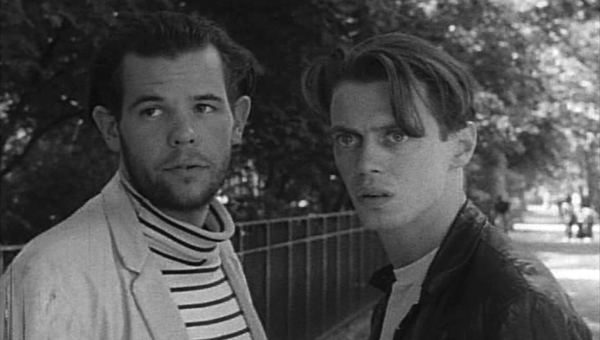Blank City Review

Old and gritty Super 8 footage of the skyline make New York’s skyline look more like diseased teeth in a gaping mouth than the cultural capital we think of today.
Cut to a screaming man in a tired suit brandishing a toy gun, threatening to kill the filmmaker before unleashing a salvo of “BRAT TA TA TATT” sound effects accompanied by wild gesticulations.
So begins Celine Danhier’s directorial debut, Blank City; a eulogy to the often overlooked and forgotten cinema movements known as No Wave and the Cinema Of Transgression, which flourished in downtown Manhattan during the late seventies and early eighties.
Danhier’s film is a compact documentary, telling the story of the rag-tag renegade crew of misfits and artistic visionaries who used film as the artistic medium through which to explore the derelict world of the Lower East Side.
Amongst the rubble of scorched neighborhoods where men and women lived alongside cockroaches and rats, these artists embraced the Super 8 and 16mm mediums to create works of art which dispensed with the rule books and re-invented how we relate to cinema
A cinephile’s dream, Blank City is a mix of movie clips from this movement as well as interviews with the people who shaped the aesthetic. Icons such as Jim Jarmusch, Debbie Harry, Amos Poe and John Waters are just a few who give their first-hand account of what life was like in these turbulent times; when drugs, discontent and desire fueled a generation of artists to search for something more.
Progressing chronologically, Blank City begins at this movement’s birth, charting who came in and out of the scene and the legacy they left behind. Danhier’s project is a hugely ambitious one, and perhaps this is ultimately to its detriment.
In trying to capture the spirit and voice of the entire movement, Blank City flits from video clips to interviews and back again at a frenetic pace. When juxtaposed with the transgressive film clips of the era that exude such sexuality and raw emotion, the interviews feel almost clinical.
Blank City struggles to bring us into its subject’s artistic worlds, with their passive interviews ensuring these remain isolated and untouchable even as we watch clips of their profoundly personal art.
When coupled with Danhier’s fast editing style, this means we never come to fully understand either these artists motivations or identities. And while the subject matter is fascinating, the film itself is ultimately dry.
As such, Blank City becomes a heartless though easily digestible and enjoyable history lesson. And, much like the movement itself, the film wraps up just as quickly; citing sociopolitical factors as the reasons behind its downfall.
Blank City is an enjoyable and traditional documentary and a great starting point for anyone interested in the era, though you can’t help but feel Danhier was only able to scratch the surface of New York’s No Wave and Cinema Of Transgression movement.
Shelton Lindsay